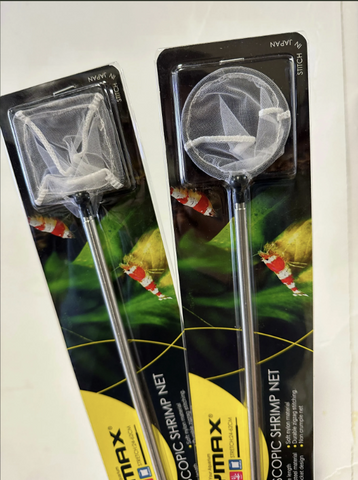Many people complain that it is a headache to have to clean out fish tank on a busy weekend. We agree with that all our hearts because we have hundreds of tanks that need to be cleaned every week. We wanna go to a party with friends!!! 😭😭😭😭
In this article, we give you tips that will make keeping your aquarium clean and deep cleaning a little easier from now and then. We hope it helps you out! Before we start, though, make sure you're not overdoing it and clean your tank.
Many people don't realize that there is a light boundary between cleaning and over-cleaning. Over-cleaning can wipe out the beneficial bacteria needed to convert harmful byproducts in your tank into less harmful substances, which can then be removed with water.
Here are quick tips that can help reduce how often your tank needs to be cleaned on a large scale.
BUY WATER TEST KIT.

Whether you have saltwater or freshwater, you need to check your tank parameters once a week. To do this, you will need to purchase an aquarium water test kit. When you complete the test, record the results and compare the results from week to week. If there is any significant difference – you will know there is a problem that needs to be addressed immediately.
You can check out the test kit here.
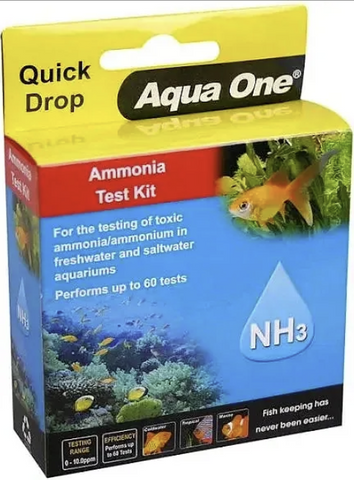
REPLACE WATER BENEFITS 2 WEEKLY instead of MONTHLY.
I recommend doing regular 20% to 30% water changes every 2 weeks instead of changing the whole water once a month. This is a big-time saver and better for the health of your fish!
USE 'Aquatic Sanitizing Pump' WHEN CHANGING WATER
To thoroughly clean your tank, you will need a gravel vacuum by your side. The gravel vacuum will gently suck all the accumulated toxins, debris and solid waste out of your aquarium substrate and help maintain the natural balance in your aquarium.
GROW HORNWORT IN YOUR FISH FISH.
Having any of these plants in your aquarium is the easiest way to increase oxygen levels, thereby improving your fish's living conditions.

I specifically mention Hornwort because it not only produces oxygen but also absorbs harmful nitrogen from the tank water. Thus, you are creating better living and breathing conditions for your fish. Your fish will whisper thank you.
CHANGING CARBON FILTER PER MONTH.
Carbon filter media helps to remove dissolved toxins from your aquarium water. However, carbon loses its ability to absorb toxins after 3 to 4 weeks. So you must keep changing this filter media accordingly for greater benefit.
Alternatively, if you want some extra toxin absorption, get some carbon filter inserts and put them in a pair of cropped tights. Hang this bag in your tank and wash it weekly and replace it every time you change the carbon filter media.
CLEANING PLUG AND GLASS.
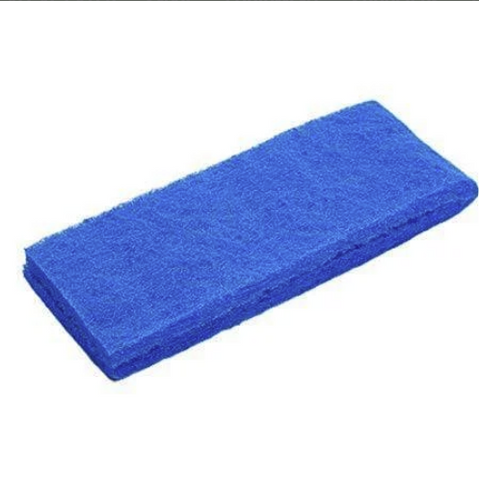
Using a sponge to clean fingerprints and water stains on the outside glass of your aquarium is just as important as cleaning the inside of your aquarium. Purchase an aquarium-safe limescale cleaner to clean your aquarium glass and fixtures. Rinse thoroughly with water several times before putting it back.
INTRODUCTION NEW FRIENDS TO YOUR FISH.
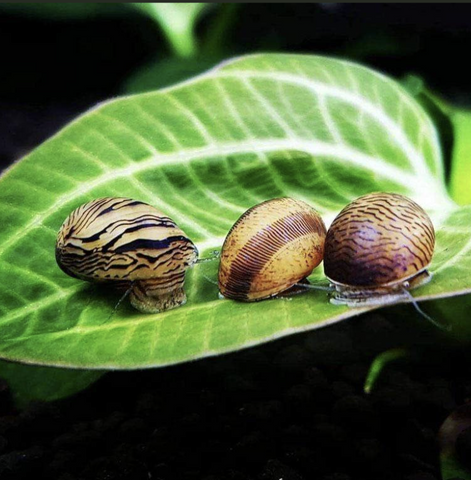
To clean your tank from the inside, you can stock some specific fish that eat algae. One thing to remember here is that you should only put species that are compatible with your existing fish into the tank.
If you have a freshwater tank, stock up with fish that clean tanks freshwater like suckling catfish, snails, and pleco. These fish that clean tanks freshwater will help eat up the algae in your aquarium.
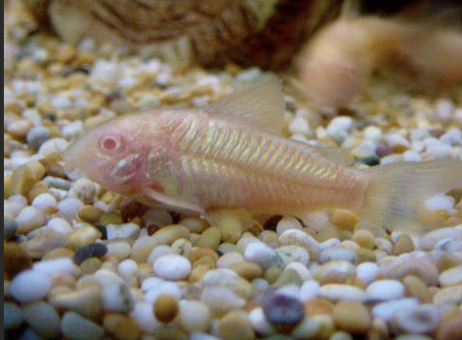
LIMITING THE DEVELOPMENT OF ALGAE.
If you reduce the light in your aquarium, algae growth will decrease. Always remember that the more light your aquarium has, the more algae will grow.
We have an article about The Best Aquarium Store To Buy Algae Eater Fish & Shrimp, which may help you find the cause and remedy of algae in the aquarium.
DON'T FEED YOUR FISH TOO MUCH.
Every time you feed your fish more (because you love them, I know) you increase the time spent cleaning your tank. This is because leftovers floating around increase the level of harmful chemicals in the water.
The trick here is to monitor your fish as they are eating if they start to slow down and stop giving more food.
We all hate cleaning but it's a must (sorry about that). Before we close, let's talk about the traditional cleaning steps. After all, traditional methods are also useful and never out of date.
Step 1: Gather all the necessary materials.
To clean out fish tank, you will need the following items:
-Tissue/Sponge (whatever can clean by hand)
-Cup
-Toothbrush
-Dechlorinated water (at least two gallons)
- Water dechlorinator
-Large bucket or bucket (about a gallon)
-Smaller fish tank or container
These items can be purchased at your local pet and grocery store. A fishing net is not required, but it helps to catch fish. I've used cups to catch them in the past, so you can try them before you buy a fishing net.
Toothbrushes can also be replaced with any scrub brush. You just need something to get the job done.

Step 2: Remove all decorative pieces, filters, and air bubbles from the tank.
Make sure your hands are clean and free of soap. Soap is not good for fish. Turn off and unplug any kind of electrical equipment as it could be dangerous to you.
Then, reach into your tank and take out any plants, decorative pieces, air bubbles or filters. There should be nothing but gravel left in the tank. This will make the next step easier to handle.
Step 3: Remove the fish from the tank.
Use smaller fish tanks or containers and cups to scoop water from the tank into a new tank or container. After the tank is fully filled with water, use a fishing net to remove the fish from the tank and place the fish in a smaller container.
Repeat until all your fish are removed from the tank. Try to find a container large enough to support the number of fish you have so that the fish will be comfortable.
Step 4: Scoop some water in the tank and save.
Using a large cup and bucket or bucket, scoop up at least half of the water in the tank and set aside. Make sure to set the water aside and not add anything to it. This water will be reused afterwards.
Reusing the water in the tank is important because fish need a certain amount of bacteria to survive, and reusing will help reduce bacteria levels.
After saving at least half of the water, carefully pour the remaining water into the sink. Do not allow any pebbles to fall into the sink as it can harm your drain if the gravel enters the pipe. To prevent cobblestones from getting through, try putting your hand in the faucet.
Step 5: Clean the Tank, Stones and Decorative Pieces.

Wipe the inside of the tank clean using a paper towel and wipe down the walls of the tank. This will remove any algae on the glass. If the tank is too dry, wet a paper towel with tap water.
DO NOT USE ANY SOAP OR CHEMICALS WHEN CLEANING.
Adding soap can kill your fish and it is safer to use tap water while cleaning. Replace paper towels when they get dirty. Cleaning is complete when no algae remains.
Clean rocks by adding tap water to the tank. After adding an inch of water, move the tank back and forth to move the water through the tank. Move the tank enough that the debris is lifted, but be careful not to splash the water.
When debris is visible, pour out the water. Repeat these steps until the water no longer picks up debris. This is an easy way to clean waste from cobblestones. For deeper cleaning, you can remove the gravel and wash it separately.
When stone cleaning is complete, remove all water. Again, be careful not to let any pebbles fall into your sink.
To clean the trim pieces, use a toothbrush to scrub each piece.
Step 6: Add water back into the tank.
Take the existing tank water set aside in a bucket or large bucket and add it back to the tank. Then add new dechlorinated water to the tank. Make sure that there is enough space for the water from the small tank to fit the fish.
After emptying the water, add two drops of the dechlorinator to the tap water. The water used in this process was dechlorinated, but tap water was used in the cleaning process.
Therefore, a de-chlorinator is added to ensure safety. A water conditioner is then added so that the water is purified for the fish.
After adding the water, add the filter, air bubbles, and decorative pieces back to the tank. Turn on all appliances to let the water move around and wait 60 minutes for the water to adjust. It is important that the water temperature stays at the same level as before. So do not add any cold water to the tank.
Step 7: Add the fish back to the tank.
After the water has settled for 60 minutes, return the fish and water in the small tank back to the large tank. Be careful when adding your fish to reduce stress on them.
Do not touch the fish while moving it back. Your fish will love the new clean tank and you will see how much they enjoy it.
This process doesn't require any expensive tank cleaning supplies, such as a water pump or special scrubber; so it's perfect for small, low-maintenance tanks.
After you completely clean out fish tank, the tank will look much brighter due to the algae removal. This type of cleaning should be repeated whenever algae is present. Make sure to change the water periodically at least every two weeks.
Micro Aquatic Shop - Aquarium Fish For Sale Near Me.
Unit 15, 2-8 Daniel Street, Wetherill Park, NSW 2164
Customer support: (02) 8320 3037
Email: support@microaquaticshop.com.au

